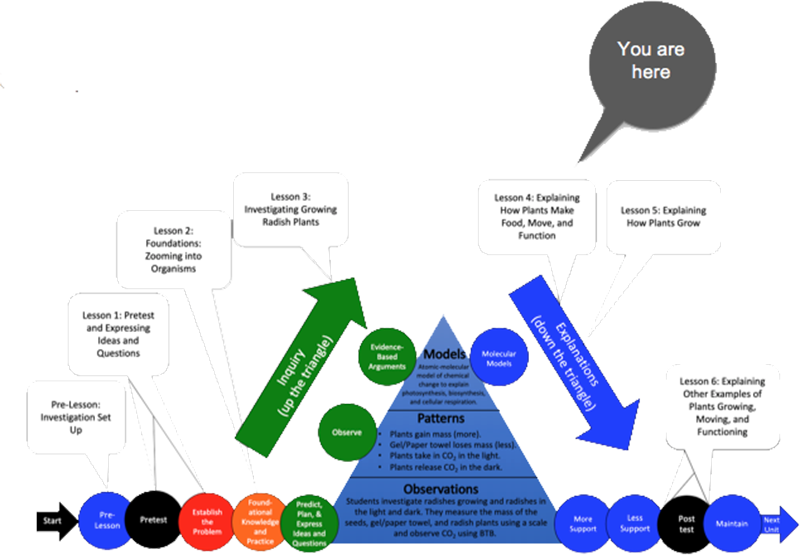Students use molecular models to learn how matter and energy are transformed in plants during photosynthesis and cellular respiration. The focus of this lesson is on developing explanations for how plants make food, move, and function in the light and in the dark.
Guiding Question
What happens to atoms, carbon, and energy during photosynthesis and cellular respiration?
Activities in this Lesson
Note: There are multiple pathways to choose from in Lessons 4-5. Please see the Plants Unit Front Matter, the Student Challenges and Teacher Choices in the Plants Unit document, and/or the Background Information section below for clarification in making this instructional decision.
 Activity 4.1: Molecular Models for Potatoes Moving and Functioning: Cellular Respiration (30 min)
Activity 4.1: Molecular Models for Potatoes Moving and Functioning: Cellular Respiration (30 min)- Note: The steps that have students construct molecular models in this activity are optional if students did molecular modeling for cellular respiration in another unit and performed well on the pretest for items related to cellular respiration.
- Activity 4.2: Explaining How Plants Move and Function: Cellular Respiration (40 min)
- Activity 4.3: Molecular Models for Potatoes Making Food: Photosynthesis (60 min)
- Activity 4.4: Explaining How Plants Make Food: Photosynthesis (40 min)
Unit Map


 Download PDF of Lesson 4 Teacher's Guide
Download PDF of Lesson 4 Teacher's Guide